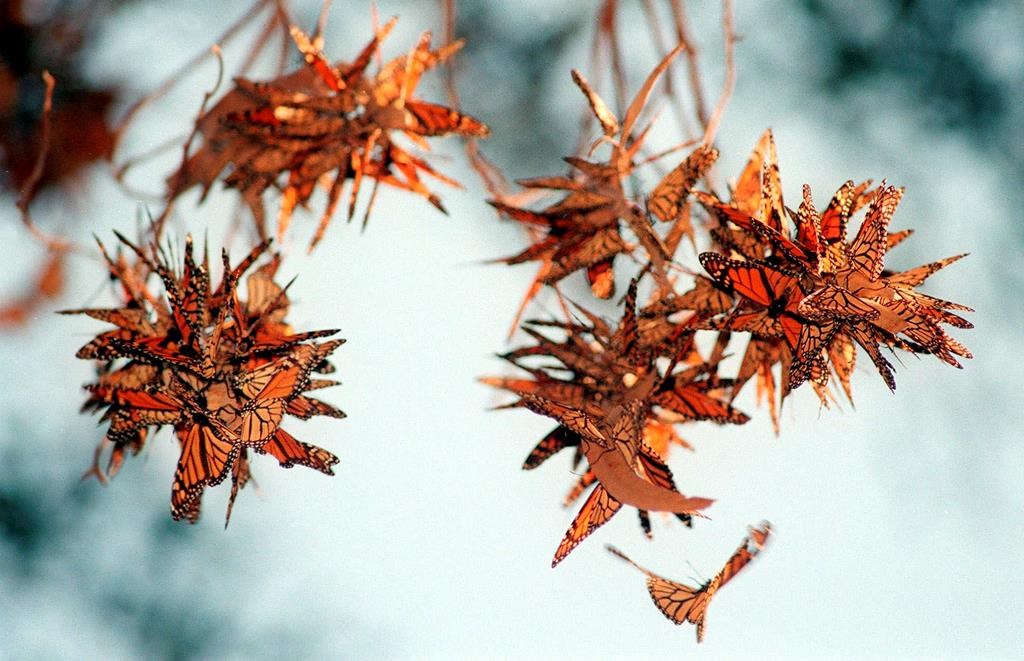The monarch butterfly, one of the most recognizable butterflies on the planet, is increasingly closer to being extinct and scientists have now added the insect to the international endangered list.

Six years ago, the orange and black beauty was designated as an endangered insect by the Committee on the Status of Endangered Wildlife in Canada, but now the International Union for the Conservation of Nature (IUCN) has added the migrating monarch butterfly for the first time to its “red list” of threatened species and categorized it as “endangered” — only two steps away from extinction.
Monarch butterflies are known for their distinct look, as well as their migration up to 4,000 kilometres across the Americas each year.
The IUCN, in a devastating report released Thursday, says North American populations of the subspecies have shrunk anywhere from 22 to 72 per cent over the past decade, depending on the measurements used, and climate change, drought, wildfires and the use of pesticides and herbicides are to blame for dwindling populations.
Logging and deforestation “has already destroyed substantial areas of the butterflies’ winter shelter” in Mexico and California, the report says, while aggressive use of herbicides and pesticides in farming can kill the butterflies.

Get daily National news
Also contributing to the subspecies’ decline is the lack of milkweed — the host plant that the larvae of the butterfly feeds on.
According to the report, pesticide use can kill milkweed, and drought limits the growth of the crucial plant. Extreme temperatures are also fuelling wildfires that destroy milkweed, as well as triggering earlier migrations before milkweed in northern climates has established.
The western monarch population, found west of the U.S. Rocky Mountains and winters on the California coast, has plummeted 99.9 per cent in recent decades, from around 10 million in the 1980s to just 1,914 in 2021, according to the IUCN.
The eastern population — found in eastern Canada and U.S., and during the winters in Mexico — declined by 84 per cent between 1996 and 2014.
“It’s just a devastating decline,” Stuart Pimm, an ecologist at Duke University who was not involved in the new listing, told The Associated Press. “This is one of the most recognizable butterflies in the world.”
Emma Pelton of the non-profit Xerces Society, which monitors the western butterflies, told the AP that people can help dwindling populations by planting native milkweed to help the caterpillars.
The Xerces Society also noted to National Geographic that this past winter offered some hope. They conducted a count of butterflies at 283 winter nesting grounds in California, which saw a rebound for the western monarch: 250,000 butterflies were recorded, up from 1,914 in 2021.
Anna Walker, who led the monarch butterfly assessment and is also a member of the IUCN Species Survival Commission Butterfly and Moth Specialist Group, told NatGeo that “when you think that there were three to 10 million butterflies in winter in the 1980s, and now there are 250,000,” the winter data still looks bleak.
However, Walker says she believes the monarch is beloved enough to spur action to help it from becoming extinct.
The international union also announced new estimates for the global population of tigers, which are 40 per cent higher than the most recent estimates from 2015.
The new figures, of between 3,726 and 5,578 wild tigers worldwide, reflect better methods for counting tigers and, potentially, an increase in their overall numbers, said Dale Miquelle, co-ordinator for the non-profit Wildlife Conservation Society’s tiger program.
In the past decade, tiger populations have increased in Nepal, northern China and perhaps in India, while tigers have disappeared entirely from Cambodia, Laos and Vietnam, said Miquelle. They remain designated as endangered.
— With files from The Associated Press













Comments